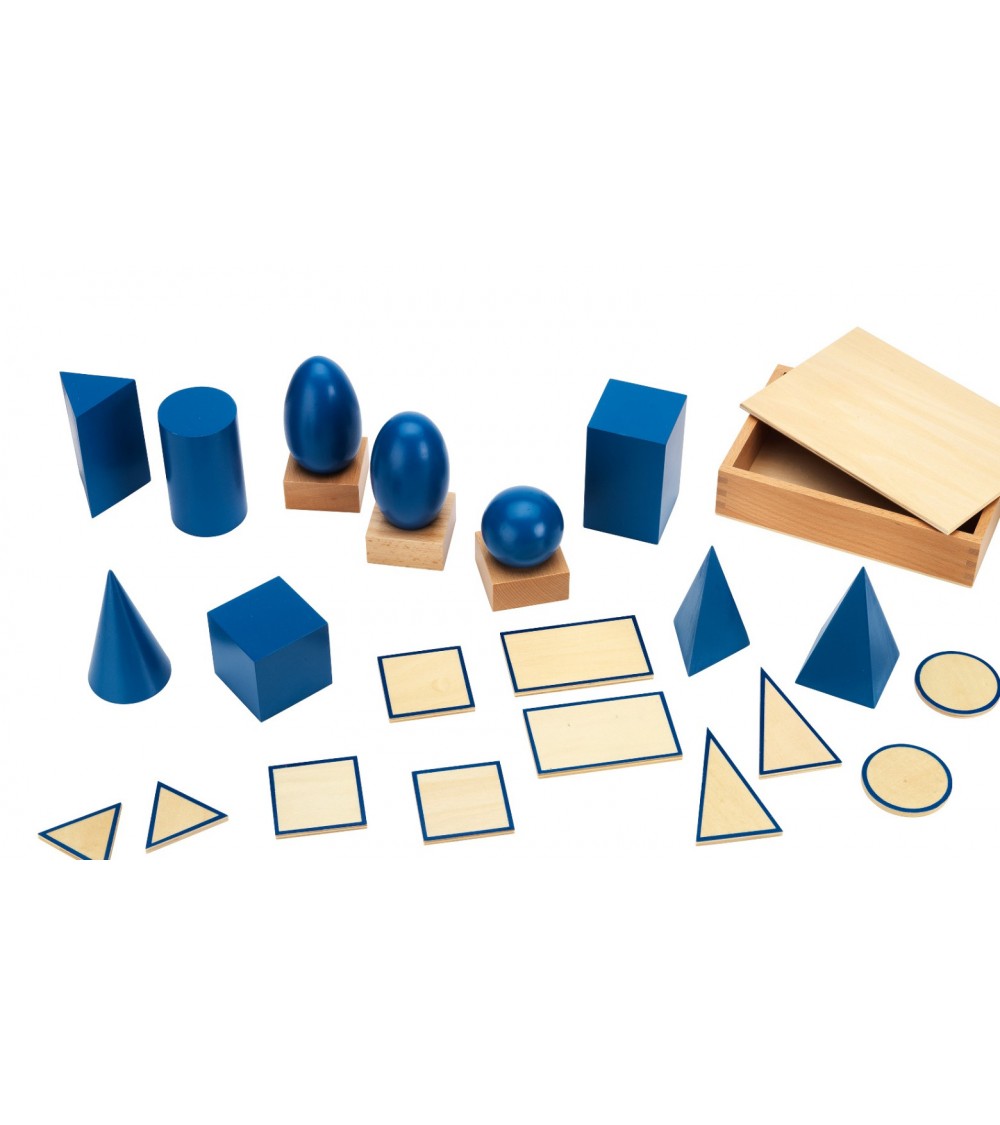Geometric bodies
Geometric bodies and surfaces, an ingenious Montessori material for body geometry
25-piece set, made of wood, painted blue in a wooden box
Literally capturing surfaces and shapes is particularly important in geometry. The popular Montessori material geometric bodies and surfaces creates a basic understanding of base surfaces, edges, curves and corners. At the primary level, it is mainly used to correctly identify geometric bodies using the stereognostic sense and to recognize similarities and differences. In secondary school, the haptically beautiful material is experiencing a renaissance when it comes to volume and area calculations.
Use, advantages, areas of application for this Montessori material:
- Identify different bodies and correctly name them with their typical properties
- Assign the body to the correct base without trying it out and place it on it
- Combine bodies with the same number of edges, surfaces, etc. into groups
- Memorization of basic properties of the body
- Feeling and identifying the body under a sheet
- Montessori material for children from 3 years
Scope of the Montessori free work material:
10 different geometric bodies, made of wood, blue
- cylinder
- cone
- four-sided pyramid
- prism
- egg
- ellipsoid
- ball
- cube / cube
- cuboid approx. 10 x 6 x 6 cm
- three-sided pyramid
14 base areas, natural
1 storage box for the base, approx. 20 x 14.5 x 5.5 cm
Instructions for the geometric bodies
The adult takes out three very different bodies (e.g. cube, cone and sphere) and places them on the table in front of him. Now he takes the first body in both hands and emphasizes it in order to be able to feel its features (does the body have corners? Is it round? ...). He takes the body and tries to find out its movement properties. To do this, he lets the geometric body slide from his hand onto the table and observes whether the body can roll (sphere, egg, ellipsoid), tilt (cube, both pyramids, both prisms) or tilt and roll (cylinder, cone).
After he has covered the body, he does the same with the other two.
Now it is handed over to the child so that they can do the exercise themselves.
When this part of the introduction is completed, the three-step lesson begins.
Level 1: That is ...
The adult points to the three bodies one after the other and names them
(e.g. this is the cube - this is the cone - this is the ball).
Level 2: Please give me ...
The adult tries to find out if the names of the bodies have been internalized.
Please give me the ball - Please put the cone on the cube - Please show me the cube ...
Level 3: What is it?
The adult points to the bodies one after the other and asks the child to name them.
For levels 2 and 3, the following applies:
If the child repeatedly mixes up the body or is repeatedly unable to name it, it must start again at level 1. For some children, it is helpful to do the exercise with just two or just one body.
Variations:
The bodies are assigned to the base panels.
The bodies are covered with a cloth and the child tries to feel a previously mentioned body.

